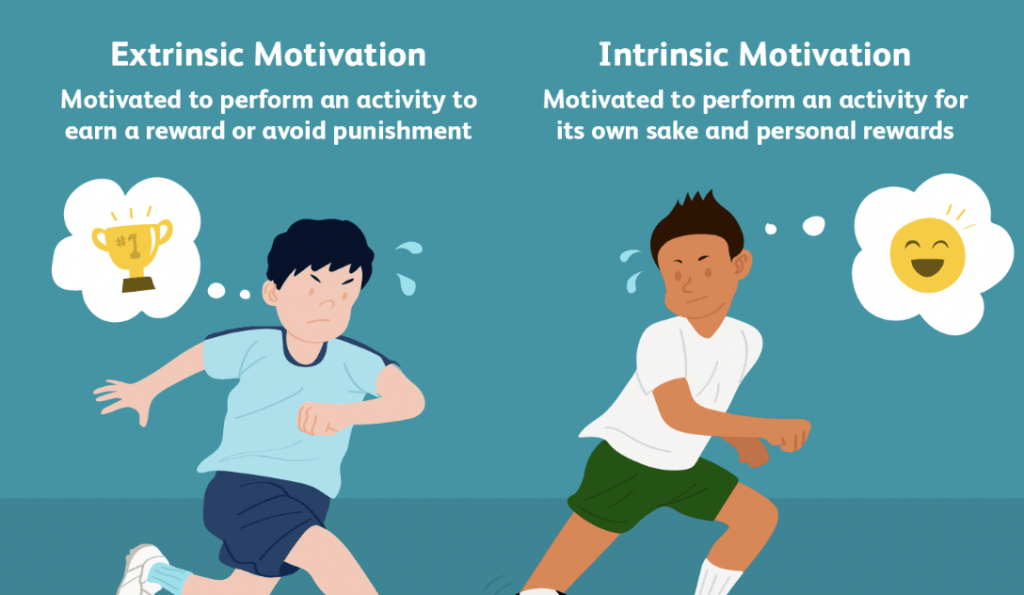Free Inquiry Project – Extrinsic Motivation
My last write up I explored what causes intrinsic motivation so this time I wanted to explore what causes extrinsic motivation:

Even though intrinsic motivation is often viewed as a major driving factor of learning, extrinsic motivation can also help influence motivation in certain contexts. In some situations, it can even play a larger role, especially in structured learning environments. When students take required courses or are not interested in the subject at hand, it is difficult for them to be intrinsically engaged in the subject. In these instances, extrinsic motivation, like grades or teacher acknowledgment, can help spark their engagement in the task at hand. Teachers play a large role in this by using positive reinforcement and providing constructive feedback. Educators can help them create extrinsic goals by turning outside pressures into self-determination. For example, a teacher who takes time to connect assignments to students’ career goals can make extrinsic motivators feel significantly more meaningful.
Extrinsic motivation is commonly used to encourage student progress using praise, rewards, and grades in educational environments. Extrinsic motivators can be effective in the short term; however, an over-reliance on them can undermine students’ intrinsic motivation. It can cause students to focus on external rewards rather than the fundamental value of learning. This can lead students to place more emphasis on material gains rather than on the intrinsic worth of education. Extrinsic motivation is enhanced through the use of rewards and reinforcement, such as prizes, praise, or the avoidance of punishment. While these external motivators can be effective in the short term, they may not lead to long-term engagement or the development of intrinsic interest in the activity. Furthermore, an excessive use of extrinsic rewards can sometimes undermine intrinsic motivation, which can be known as the ‘overjustification effect.’ When people begin to predominantly attribute their participation in an activity to the external reward rather than their own satisfaction or internal drive, this can happen. As a result, the development of intrinsic motivation and independent and self-directed learning, can therefore be hampered by over-relying on extrinsic motivators.
Overall, even though intrinsic motivation leads to further motivation compared to extrinsic it is still important to cultivate both as extrinsic provides the initial trigger that helps keep learners consistent. The biggest takeaway I learned was to use extrinsic motivation to direct students toward self driven learning.
Reference
Zhou, Z., & Zhang, Y. (2023). Intrinsic and extrinsic motivation in distance education: A self-determination perspective. American Journal of Distance Education, 38(3), 1-14. https://doi.org/10.1080/08923647.2023.2177032